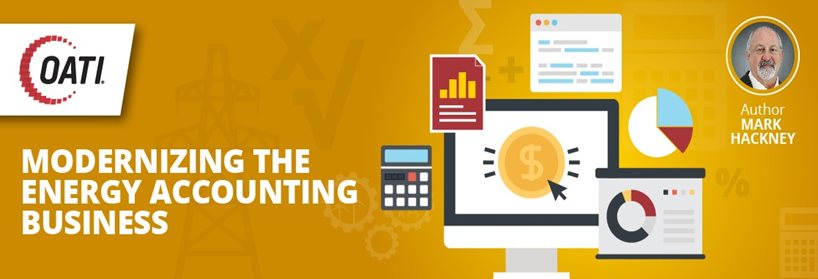Home » Blog » Transmission and Reliability Management » Modernizing the Energy Accounting Business
Modernizing the Energy Accounting Business
Are you still having your system analysts do the energy accounting and reporting using spreadsheets? Or do you have an old energy accounting system that is out of the control of the analysts that use the product day in and day out?
I would like to share my experiences — from the perspective of the manager of a group of real-time, pre-scheduling, and after-the-fact personnel — on doing energy accounting for load, billing, and reporting using spreadsheets. I’d like to share why a more automated, data searchable solution is necessary as a replacement.
Spreadsheets are a valuable tool, but not as a long-term database for metering data, load calculations, report generation, and user readability. With multiple transmission pre-schedulers and a single, shared spreadsheet on a common network drive, spreadsheets can only go so far. If somebody has the spreadsheet open, no one else can use it until the spreadsheet is closed out. Another issue is when somebody forgets to write down the values, the check-out gets out of “alignment,” the data used by the billing analyst is wrong and an incorrect invoice is generated. This creates a situation where additional time is expended trying to find the discrepancy when it’s time to verify the information with the customer.
Better yet, somebody makes an edit to a formula in the spreadsheet (or multiple sheets) that’s factually wrong. Other tabs in that spreadsheet become populated or replicated and used in subsequent months without review until multiple months of data are wrong. This is further complicated as there is no real audit trail to see when and by whom the erroneous change was made. Spreadsheets do not lend themselves to great auditing in energy accounting.
Modern day applications — with report generation and email routing capabilities — are much better than in the recent past. Even better are solutions that:
- Combine all of those features but also allow a business analyst to work with real-time and pre-scheduling personnel and develop calculations, displays, and reports to meet their needs
- Use the time-series data that would have been in those spreadsheets and allows for quality control, display creativeness with the same data (avoiding replication of datasets) and is available to multiple users at the same time
- Archive and lock, so that replication of reports from several years ago produce the same report today as it did then
- Provide an audit trail for any data and formula changes
- Have potential for mirroring/shadowing a billing done by a Transmission Provider that you’ve purchased transmission from and need to validate with your own data
The OATI energy accounting software solution provides the feature set that takes primary data from your meters, schedules, and e-Tags to allow you to:
- Combine them in a logical and methodical way to create information from that data
- Combine, subtract, and find a coincident value, like the system peak, and generate a management report
- Take that report and automatically route to a defined list of personnel at a specified date/time
- Create data reports in a consistent manner that is then available for compliance reporting under FERC Form 1 and FERC Form 714.
These advancements allow energy accountants to be several steps ahead from the time when data was manipulated by hand, accountants worried over usable disk space and human errors, and mistakes were fixed late in the billing cycle. With consistent, controlled, and available data as the main principles behind OATI webAccounting and its optional invoicing module, OATI can help you modernize your energy accounting and transmission transaction billing business today. Reach out to sales@oati.net to schedule a free demo or learn more about the OATI energy accounting software solution here.
About the Author:
Mr. Mark Hackney has over 38 years of experience within the electric utility industry. Mr. Hackney is currently a Director at Open Access Technology International, Inc. (OATI). He is responsible for Balancing Areas and Transmission Providers within the Western Interconnection and meeting their needs for new and innovative solutions to enhance, supplement, or replace existing products.
- October 20, 2021
